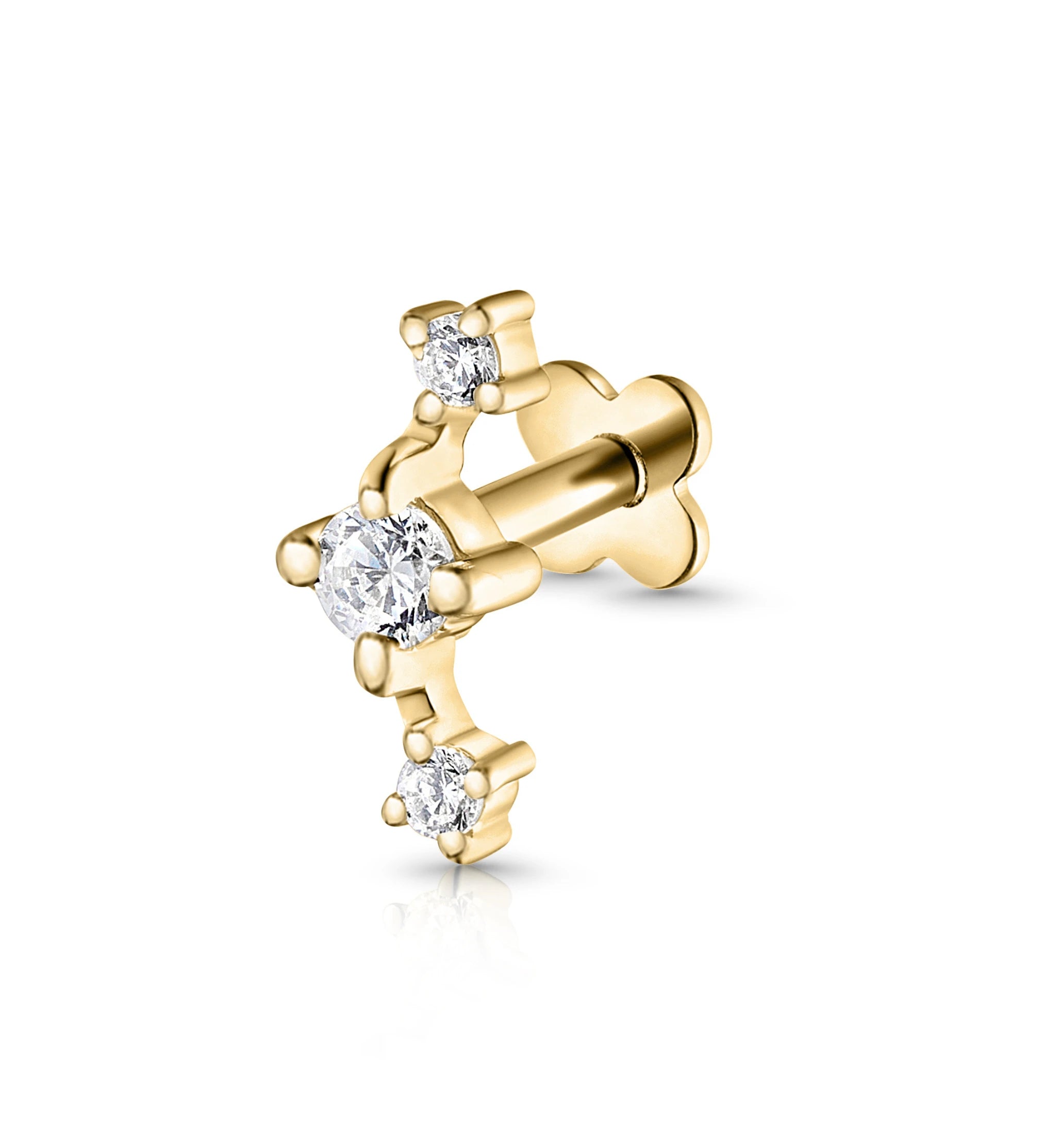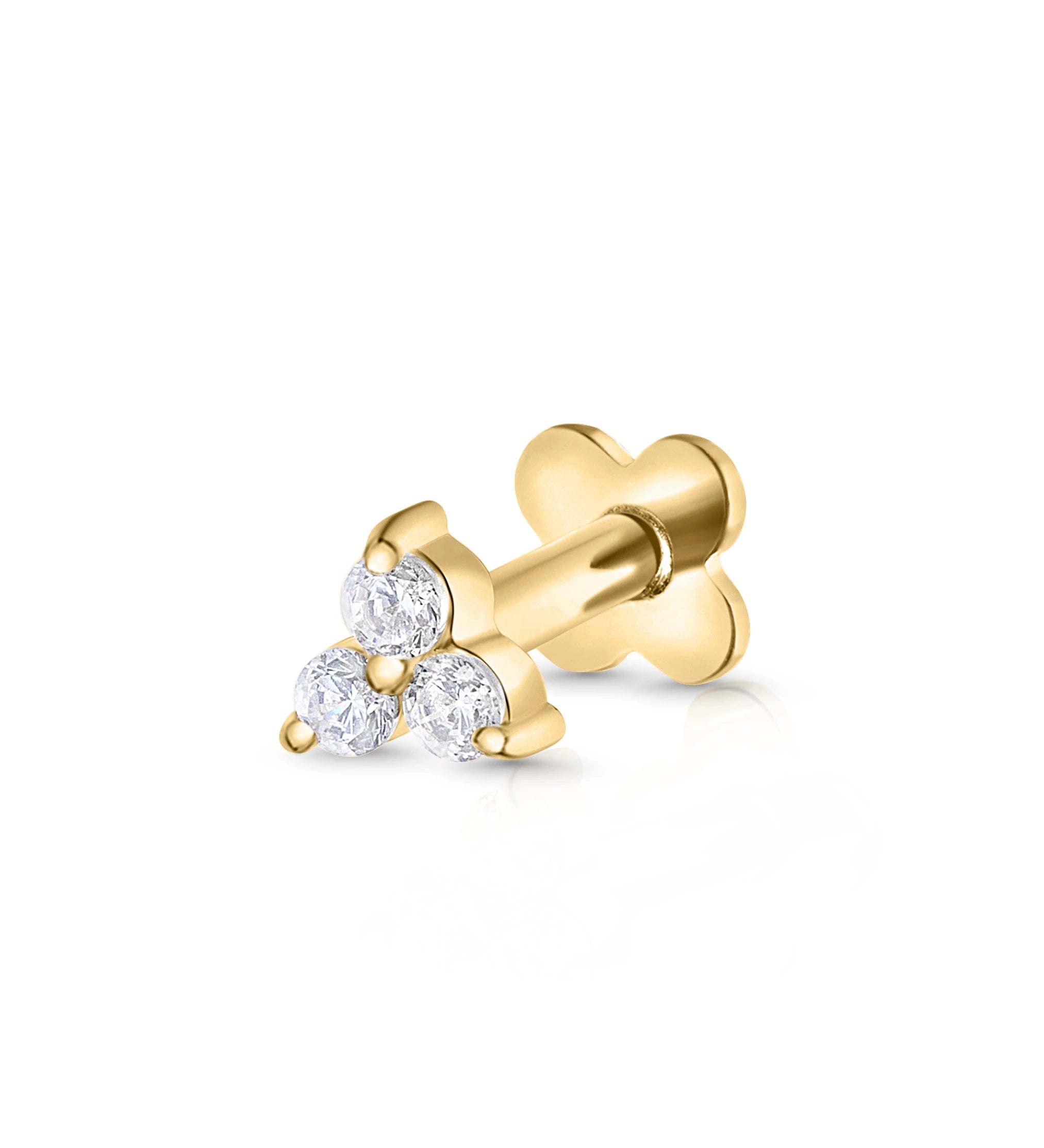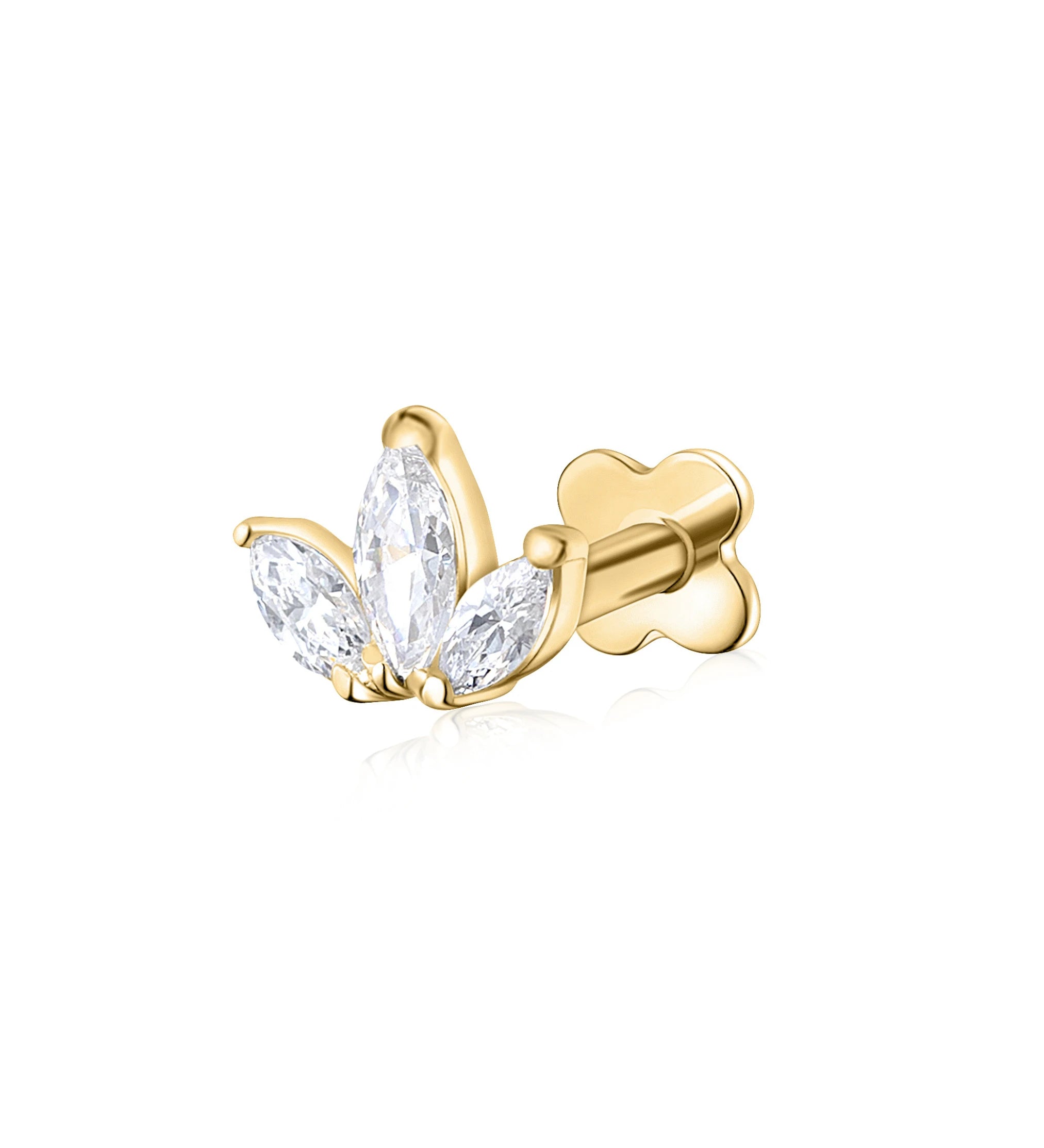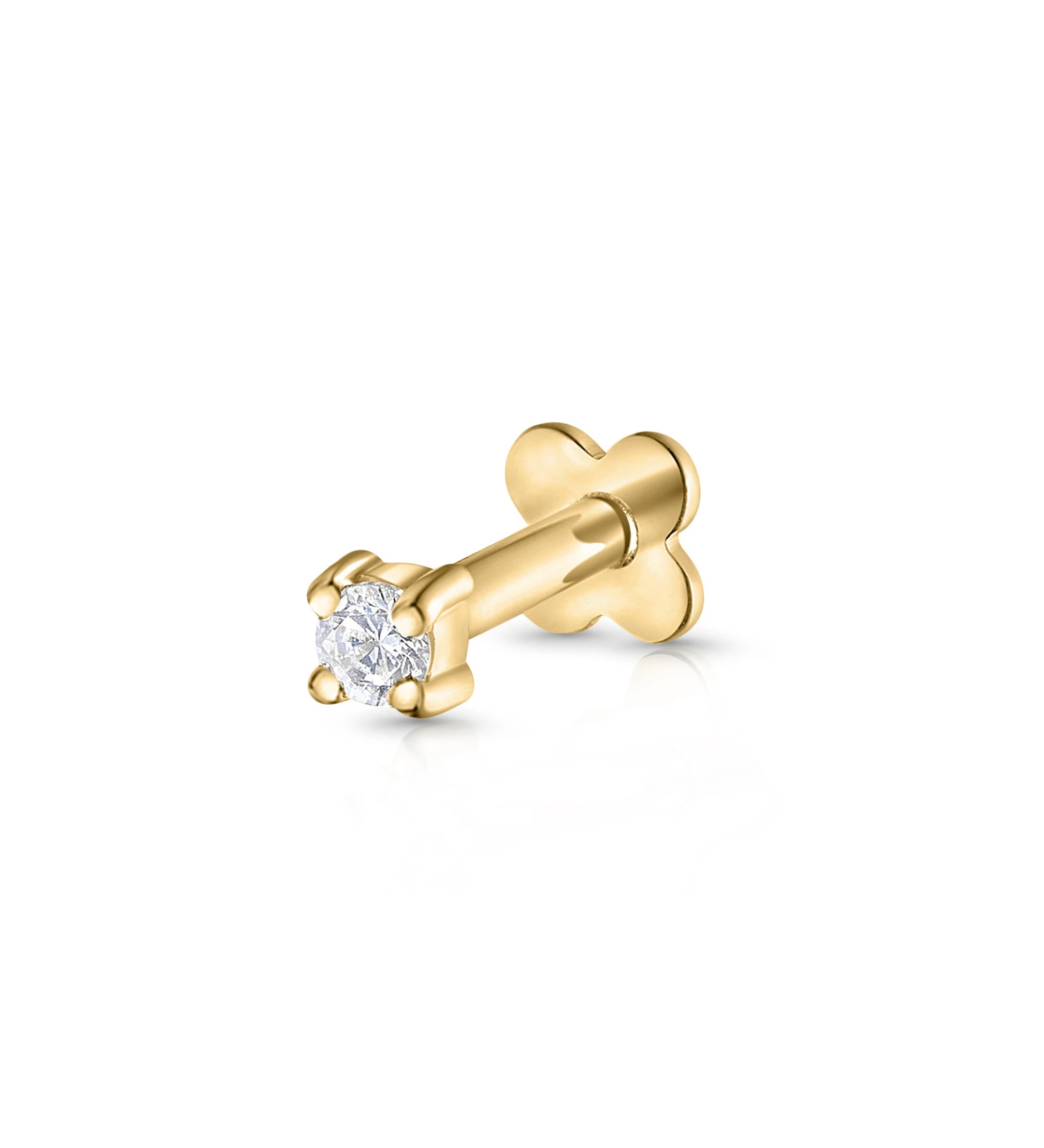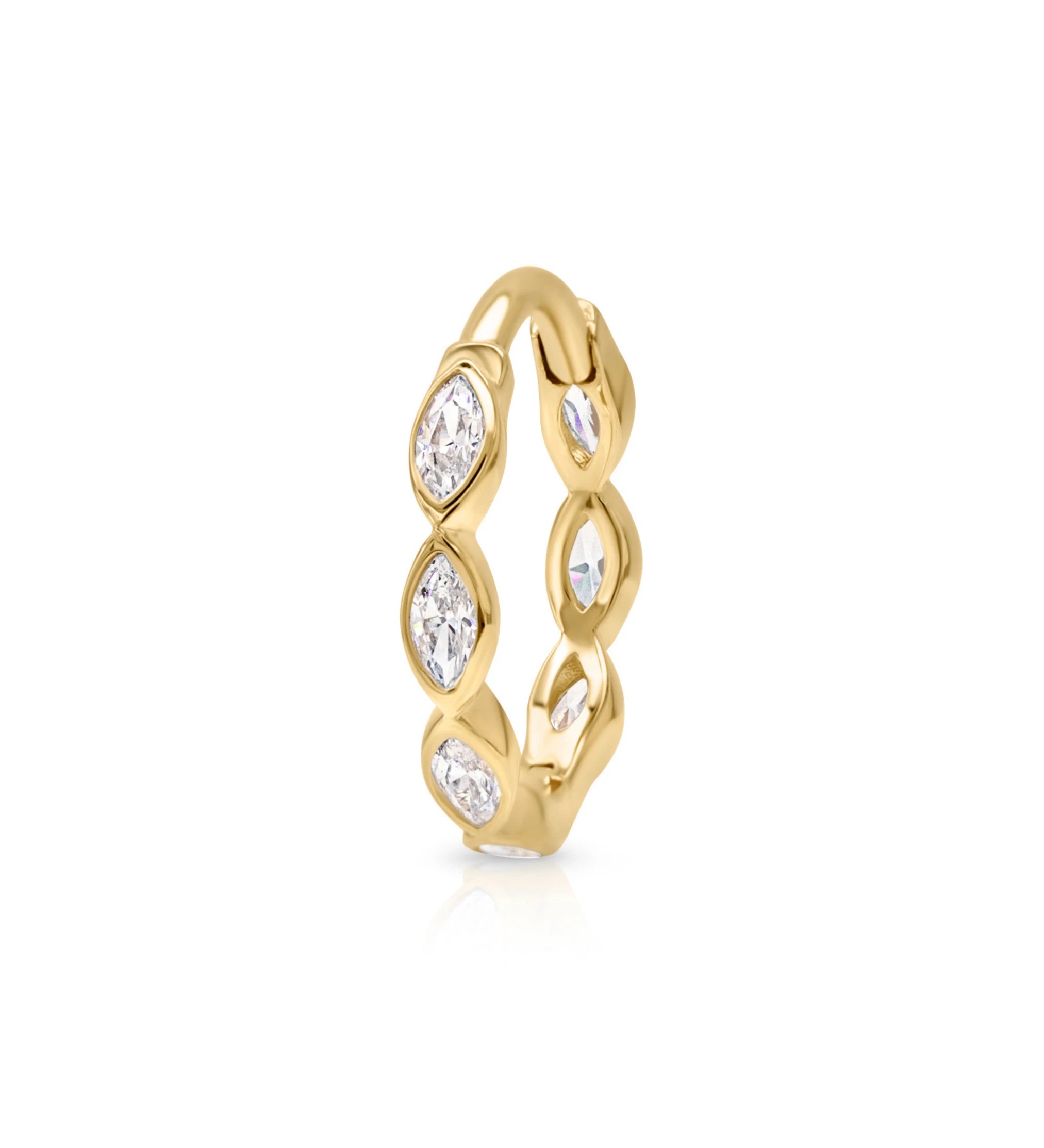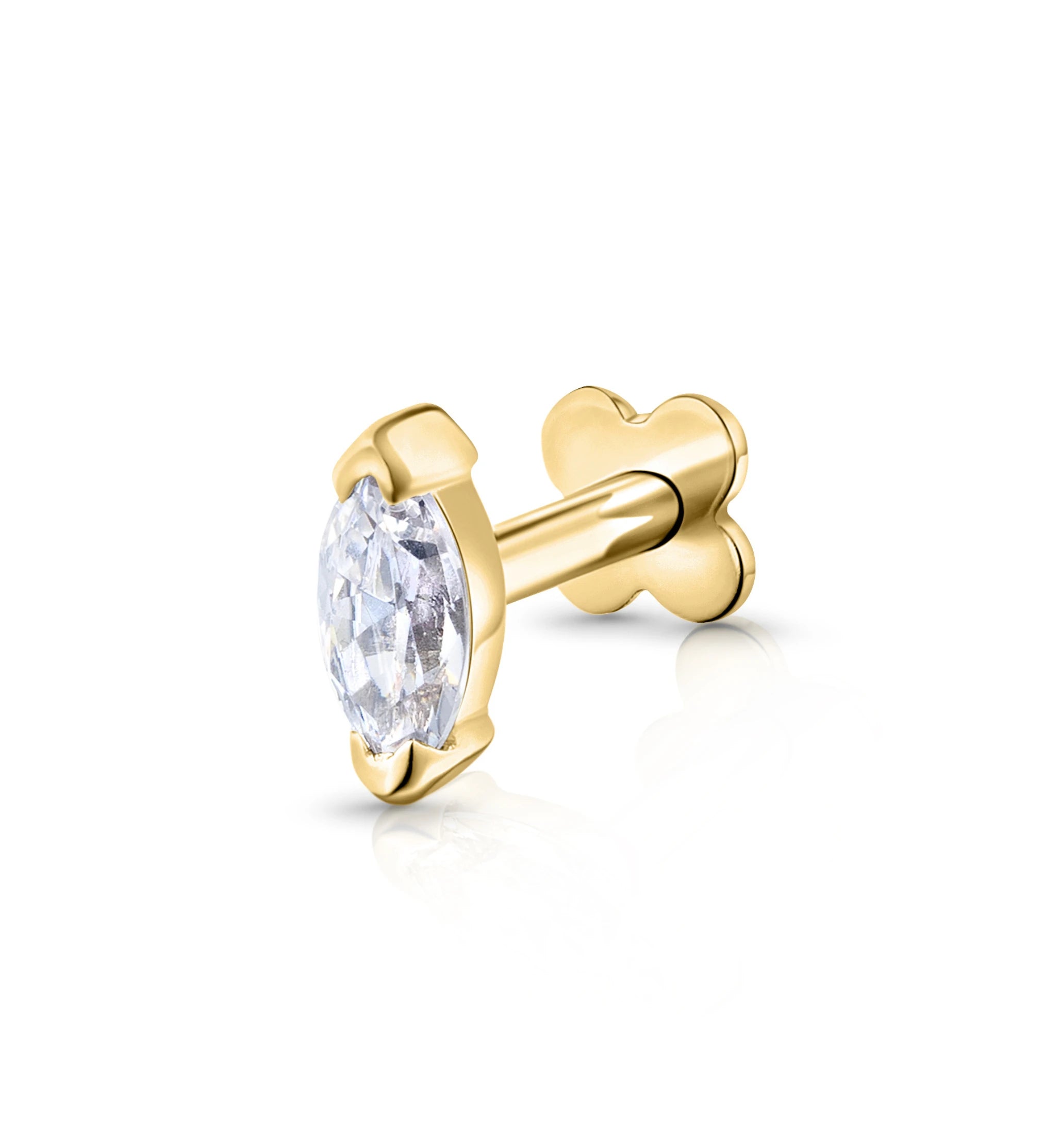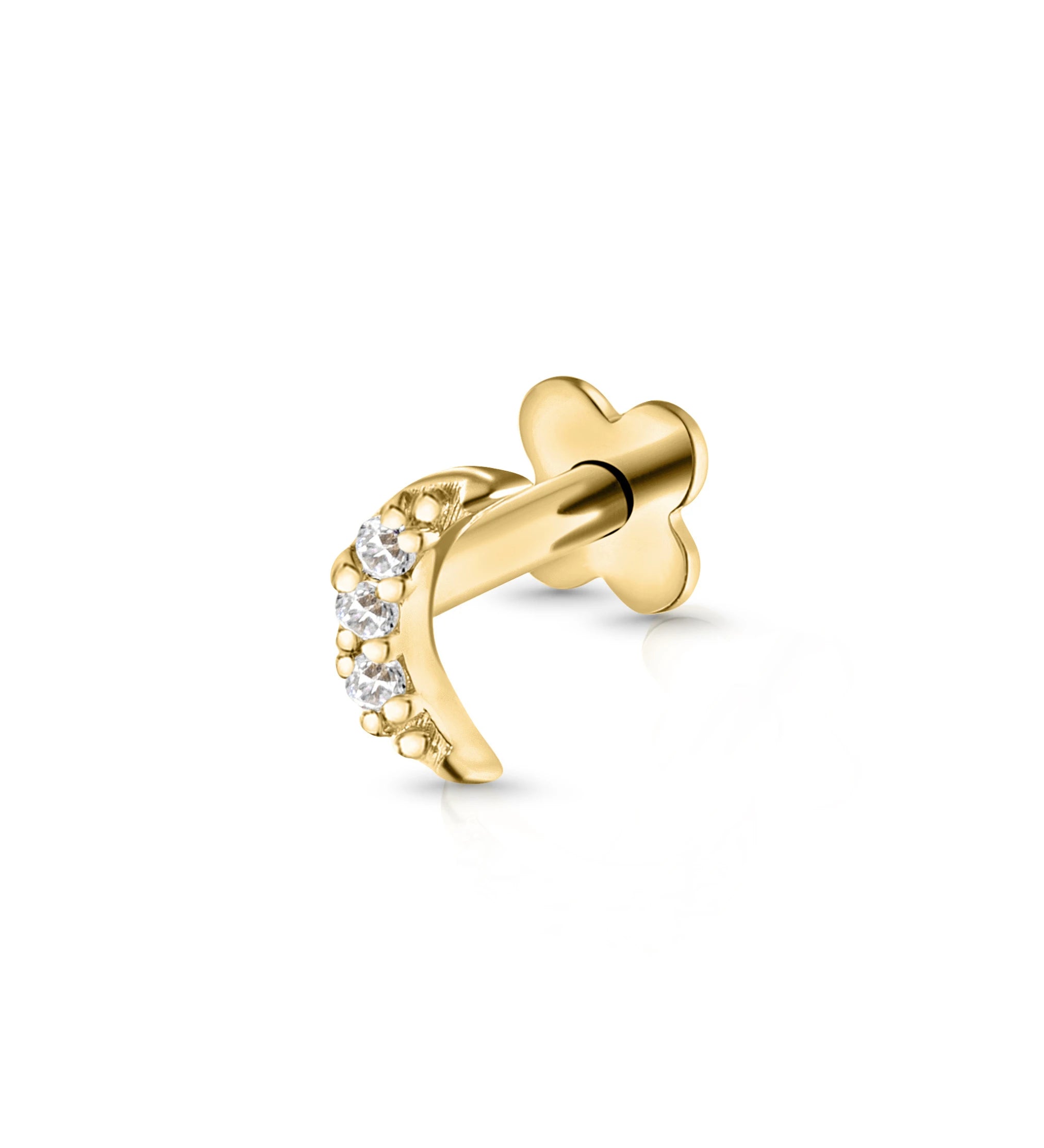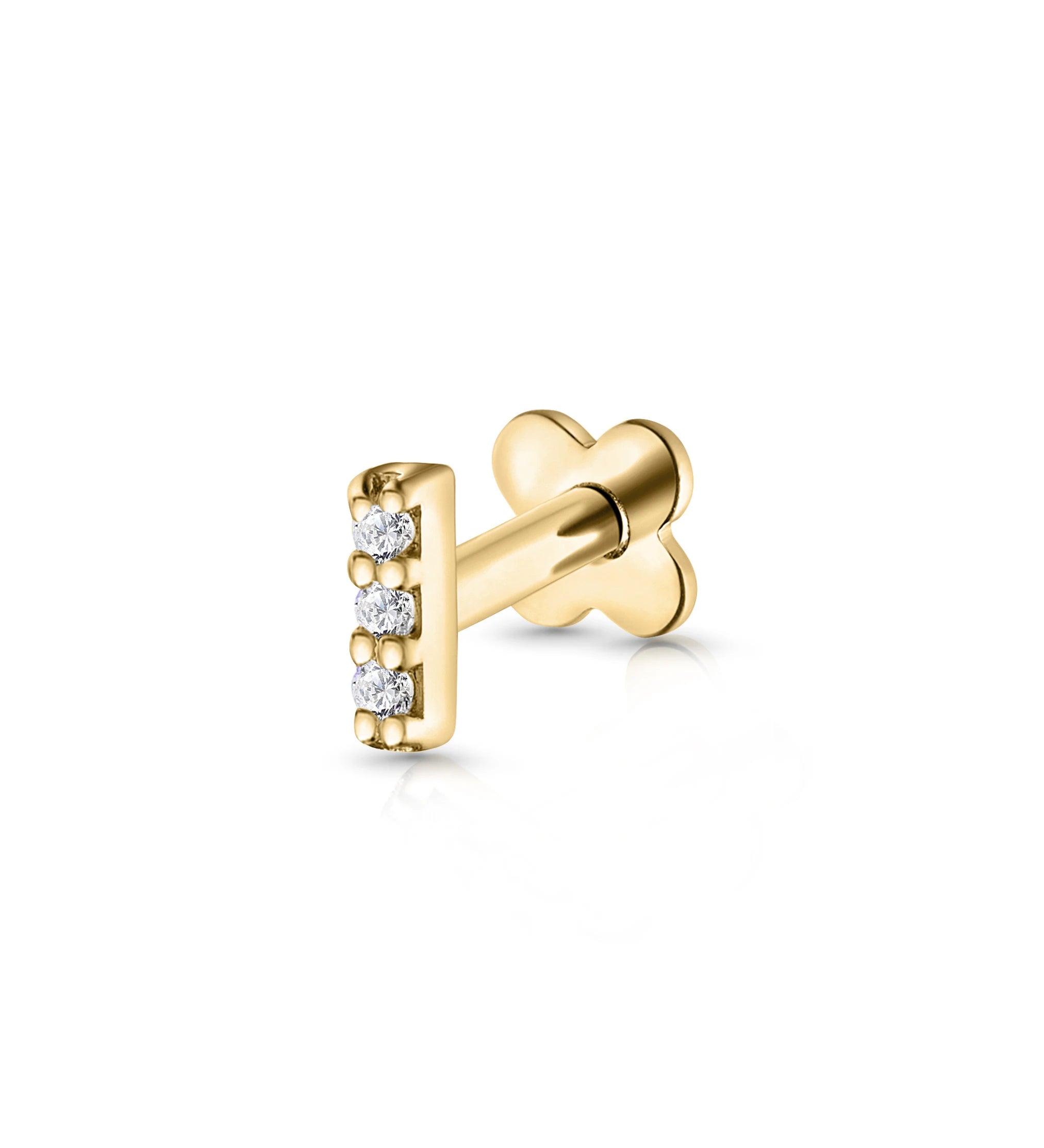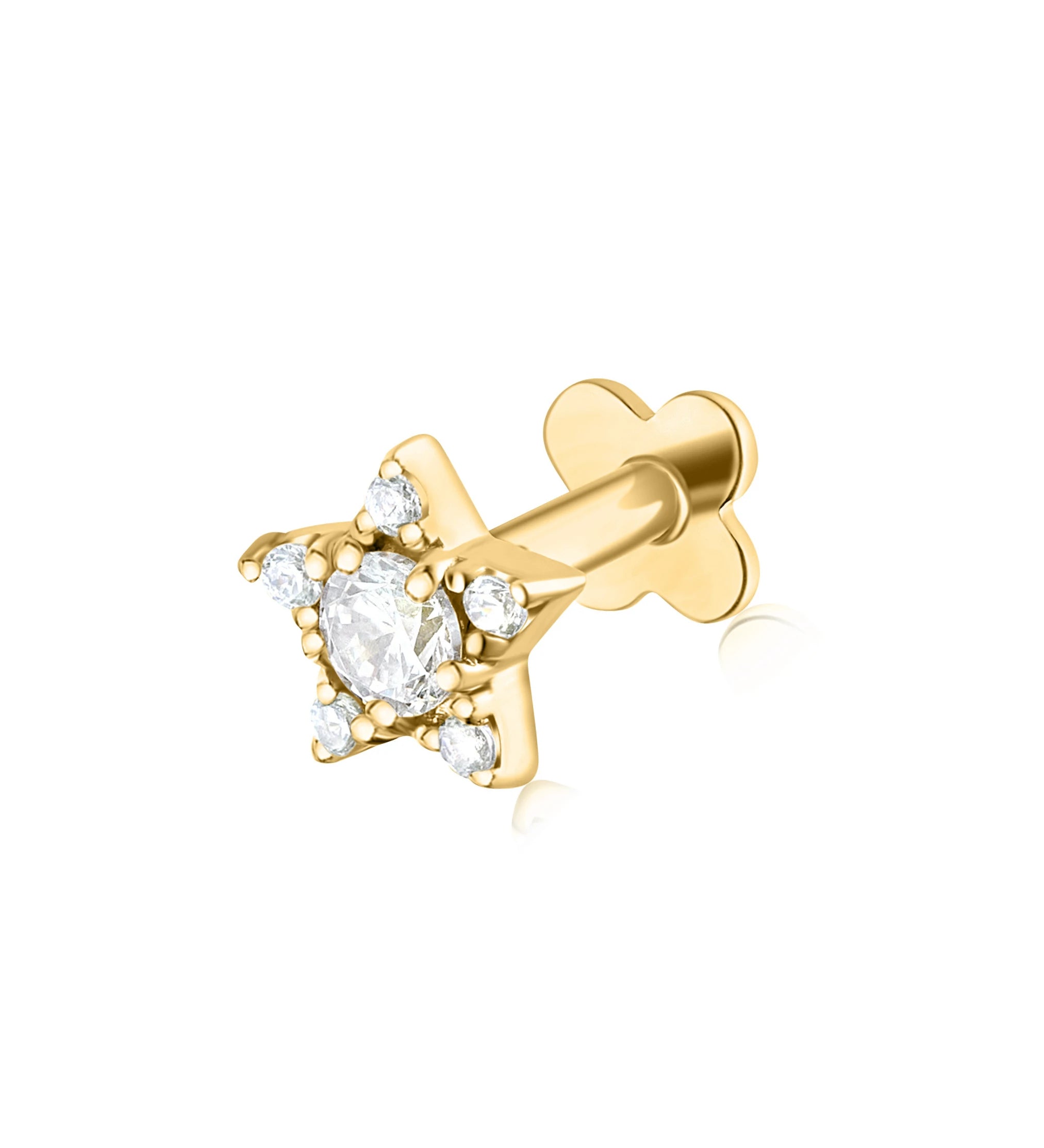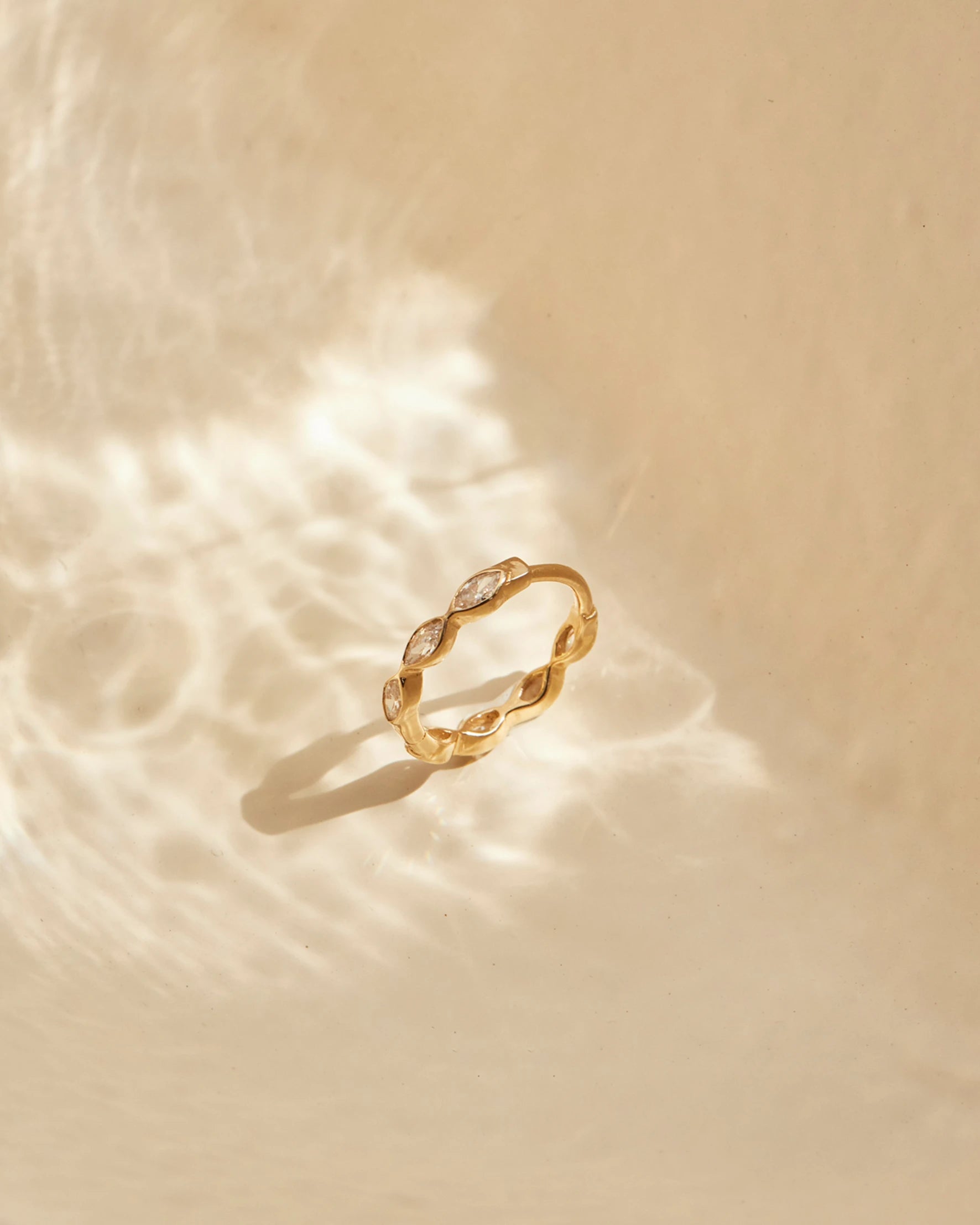Conch Piercing
Whether eye-catching conch rings or sparkling cubic zirconia stud, the Conch Piercing can be styled individually and uniquely. Everything you should know about the conch piercing you can find out here.
How painful is the Piercing?
Since the Conch Piercing is placed through a thick part of the ear cartilage, it is a more painful piercing. The pain is rated at approximately 7/10, but can vary depending on individual pain tolerance.
Dermal Punch
Stretching the auricle is very painful, which is why the 'Dermal Punch' method is often used for Conch Piercings. This involves using a type of cannula that punches out cartilage tissue instead of a typical piercing needle. The advantage of this method is the shortened healing time. The disadvantage is that the hole no longer closes because the tissue has been punched out.
The ideal Conch Piercing Jewelry
Conch jewelry is available in many different designs. Simple gold Stud, sparkling earrings with zirconia stones or eye-catching conch rings. Unique styles can be created with conch piercings. Here you can find out what you should consider when choosing jewelry, which size you should choose and which materials are best suited.
How to clean a Daith Piercing?
Proper care of your Daith piercing is crucial for smooth healing. To clean the piercing, you can use a sterile saline solution or a special piercing care product. Contamination from environmental influences should be avoided. You can easily clean our Daith jewelry made of 14K gold with soap and water, or clean it with an ultrasonic cleaning device for deeper contamination. Use our free gold polishing cloth to give your Daith piercing a new shine.
What diameter do I need for my Daith Piercing?
The Daith Piercing is available in several different sizes. It usually has an inner diameter of 8mm, 9mm, or 10mm. Before buying your Daith Piercing, you should check the individual anatomy of your ear and the thickness of your inner cartilage fold to find the right inner diameter. You should also pay attention to the size of the design so that it doesn't look too big or too small on your ear. If the Daith Ring is set with large stones, the piercing often looks larger than a simple gold ring.
Daith Piercing: Materials
Choosing the right material for your daith piercing is essential for smooth healing and, above all, for a comfortable wearing experience in everyday life. The most popular materials are gold, titanium or stainless steel. If you don't want to change your daith piercing every day in the shower, we recommend choosing real gold as the material. Ideally, the gold content should be 58.5% (14 carat), because 14K gold piercings retain their shine, regardless of whether you shower, swim or play sport. You can wear them 24/7 and never have to take them off. Say goodbye to irritation or discoloration, because gold is hypoallergenic and one of the best tolerated materials there is.
Styling and different looks
Here you will find many different daith designs and gold colors, whether simple rings or eye-catching pieces of jewelry with shiny zirconia stones. You can easily adapt your daith to your personal style so that it matches any outfit. Its central position on the ear makes it an eye-catcher and is guaranteed to attract everyone's attention. Our fine piercings also give your look a special elegance.
Piercing types and individual compositions
Create your own individual ear composition by combining the daith piercing with other piercing types. The following go particularly well with a daith helix, rook or tragus piercing. Together with the right choice of jewelry, you can transform your ear into a true work of art that reflects your personality.
Conclusion
For anyone wanting a striking and unique piercing, the Daith is guaranteed to be the right choice. Now you know everything important to guarantee optimal healing, how to properly care for your piercing, and what to consider when choosing jewelry. With the right piece of jewelry in the perfect size, the ideal material, and your individual favorite design, nothing stands in your way. Discover our jewelry collection now and find your perfect Daith Piercing!

